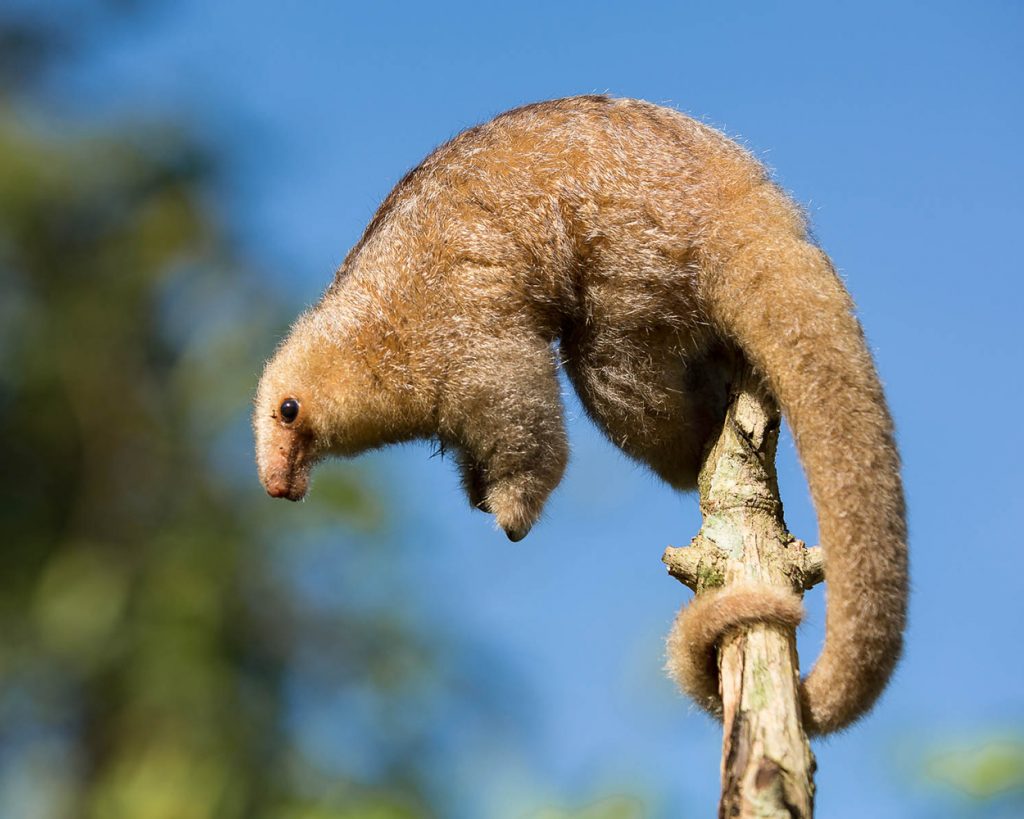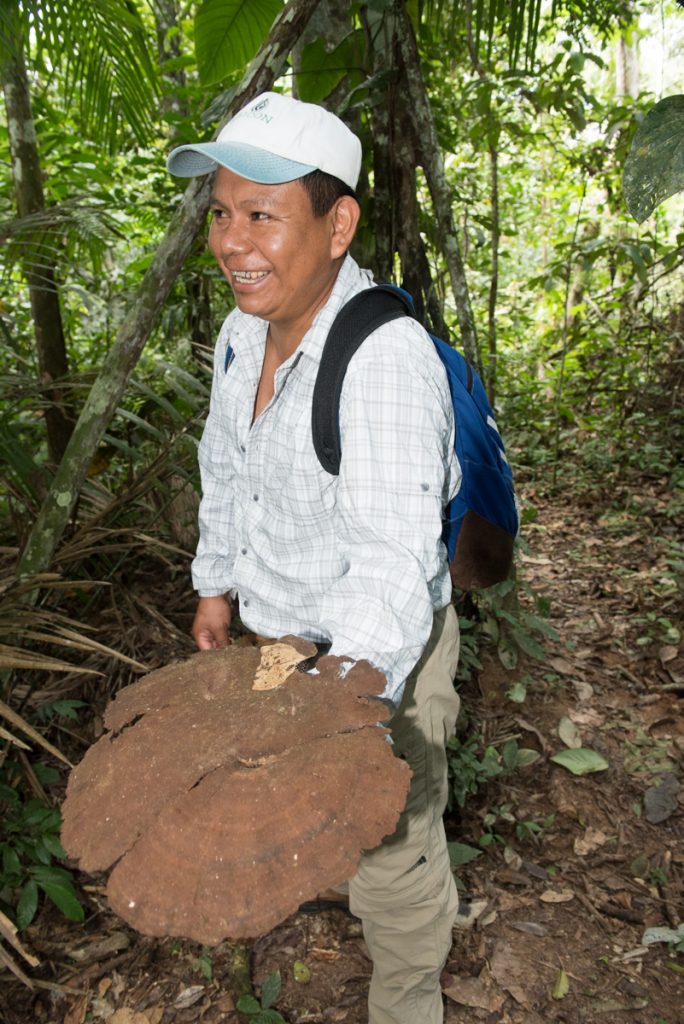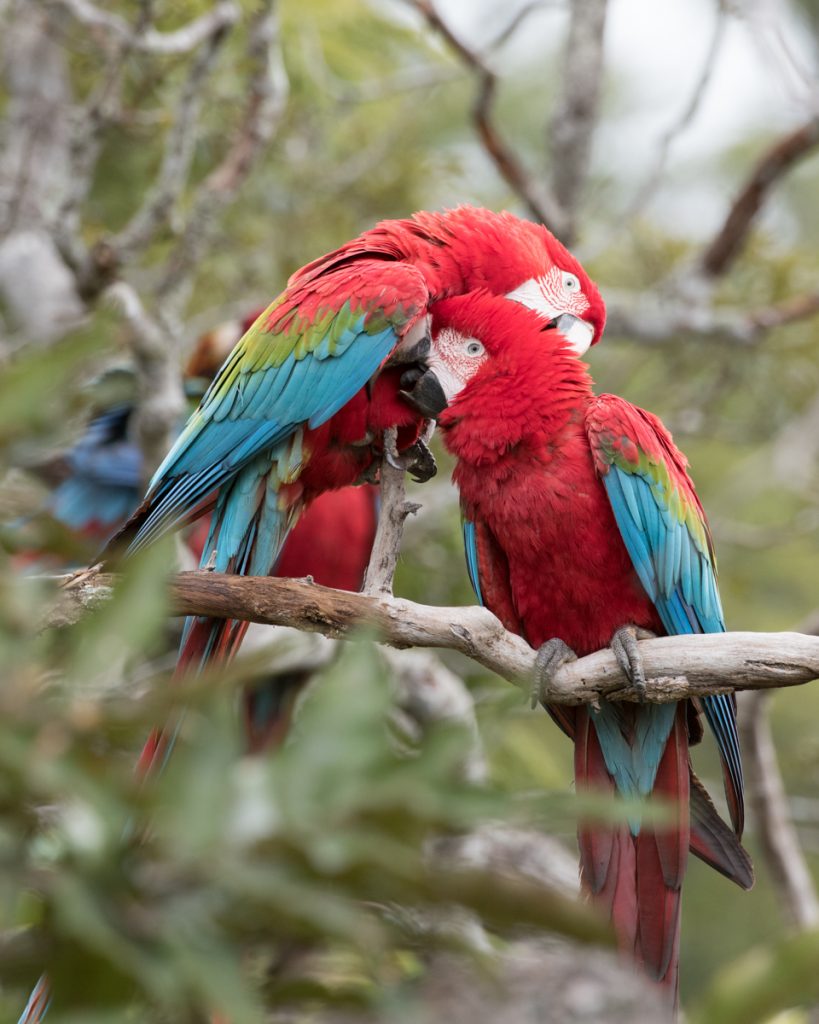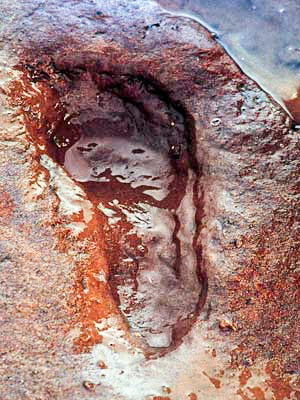
Giant Anteaters are widely distributed across the Amazon and tropical grasslands of South America, they live in many different habitats and quite simply need lots and lots of ants or termites to feed on. Their bodies have become uniquely adapted to feed on ants with an elongated head to allow them to probe deeper into ant hills and their very large claws to break into them. The giant anteater has to walk on its knuckles because its claws are very specifically designed to dig and make it impossible to walk on them. They also have a very large bushy tails which they use to shade from the baking sun or even as a blanket.
For a project I was working on about South America I needed pictures of giant anteaters and other anteater species. With this in mind I visited a community eco lodge in Bolivia called Chalalan, in the Madidi national park. In the past the area had suffered greatly from poaching and I wanted to see what difference community involvement had made with the many eco lodges in the region. Our expert guide at Chalalan, from the local community of San José de Uchupiamonas at the front of the group quickly stops, points and quietly says anteater. Im directly behind him and still all I see is a tail disappearing into thick vegetation. We quickly leave the trail and head into the forest to get a better view, it is almost impossible even from a few meters away to see anything in the dense forest.
The amazon is unbelievably beautiful, the experience sublime. You have to go there for the experience of the wilderness, the trees and plants, the insects and the rare glimpses of the more illusive animals. It is not surprising many of the animals are very illusive after the poaching which has occurred over the years. It is good to know many of the communities now see the value of the animals in terms of ecotourism and a future for their families. Many of the communities also rely on the forest for their medicines and preserving the balance of the ecosystem is key to its survival and their way of life. I did not see any anteaters in this part of the Amazon clearly, although the experience of being there was very amazing.
There is a smaller tree dwelling anteater called a Tamandua, which in Tupi (Tupi people) is the word for anteater, what we call a tamandua they call tamandua mirim which simply translates as small anteater. The Tamandua is very curious looking, its elongated head, large ears and long tail making it very distinctive. The large digging claws equally suit it to climbing trees in the search of ants that make there home there. It is not as slow moving as a sloth but nor does it seem to be in a hurry on its eternal forage for ants. Recent DNA studies have shown a link between the sloths and anteaters all of which live in South and Central America. It was in the Pampas area close to Rurrenebeque that I headed next to photograph this amazing animal.

I had the idea from reviews that the Pampas was a destination that was pushed to backpackers as a cheaper alternative to some of the more remote rainforest reserves. The area did have lots of tourist lodges because of its proximity to Rurrenebeque. The area I discovered was very amazing, huge black caiman up to 6m long, pink river dolphins, howler monkeys, a myriad of beautifully coloured birds and eventually a tamandua. The black caiman were very aggressive and one morning out on the river we came across a small dead caiman and we asked our guide what had happened, was it a poacher? Black caiman was the reply, and the same happens to anything else that gets in their way. Black caimans were hunted close to extinction for their soft leather, the leather crossed into Brazil with its nearby border and because of the vastness of the area it was and still is a very difficult area to police. The numbers of black caiman are recovering now although the species is still at risk.
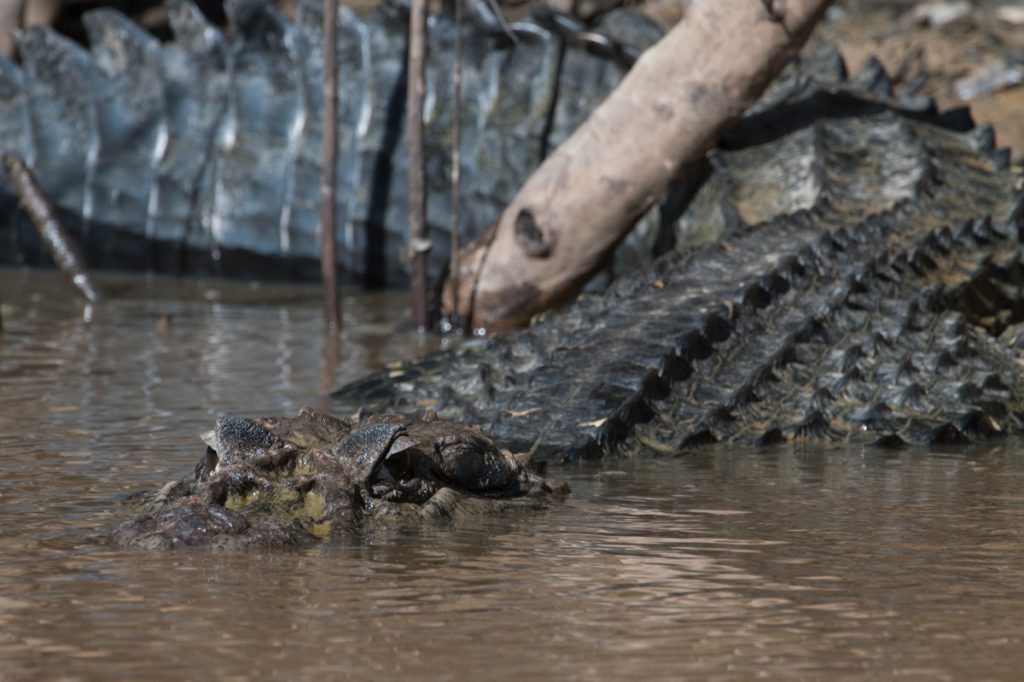
The open grasslands of the southern Pantanal in Brazil allowed much better viewing opportunities for Giant anteaters. The farm tracks which zigzag through the area allow you the opportunity to observe and photograph these amazing animals much easier. You would think there would not be enough food to feed these unique mammals, however after visiting the area I realised just how many ants and termites there are in the lush tropical regions and surprisingly how huge the ant nests can get. To give you an idea, the estimated number of ants on the planet is estimated to be equivalent to the weight of 34 billion people. Ants are more successful than humans biologically speaking and so it is no surprise then that some mammals have adapted to take advantage of this abundant supply of food.
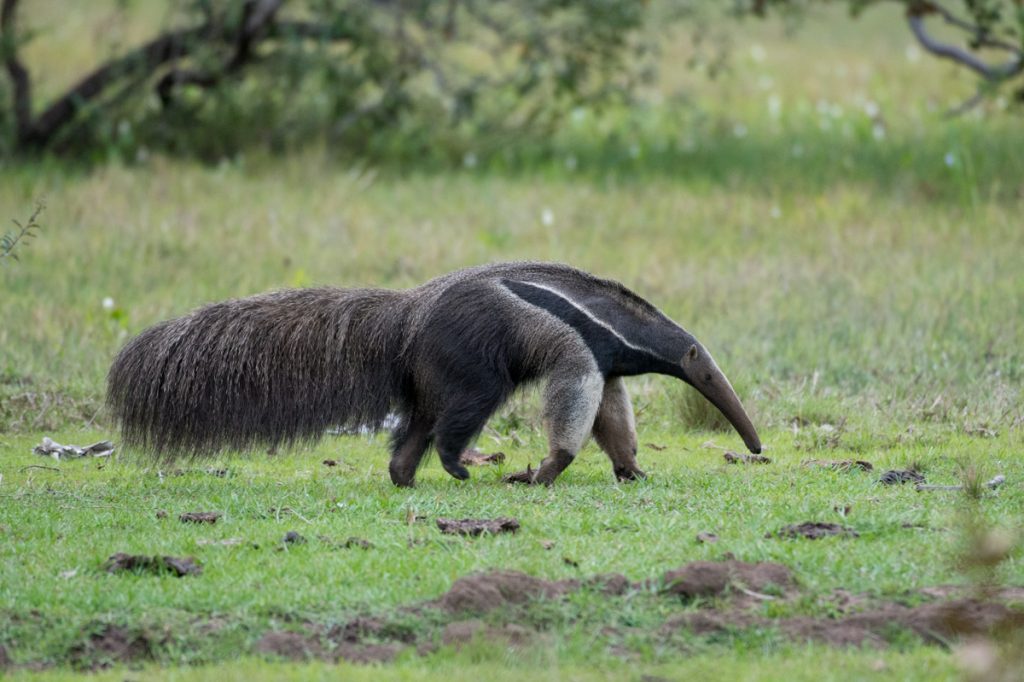

The last species of Anteater that eluded me was the much smaller silky anteater or pygmy anteater. Because they are incredibly illusive they have been very difficult for biologists to study also. It is now thought that there are 6 species of silky anteater in Brazil alone and perhaps more? They literally have been hiding in plain sight but it was not until research was done on different populations did they recognise that they have evolved into different species. I think it would take a lifetimes work in Brazil alone to photograph and film these tiny fascinating animals. My next wildlife travel blog will be about the Madidi National park and its clay lick for the red and green macaws.
